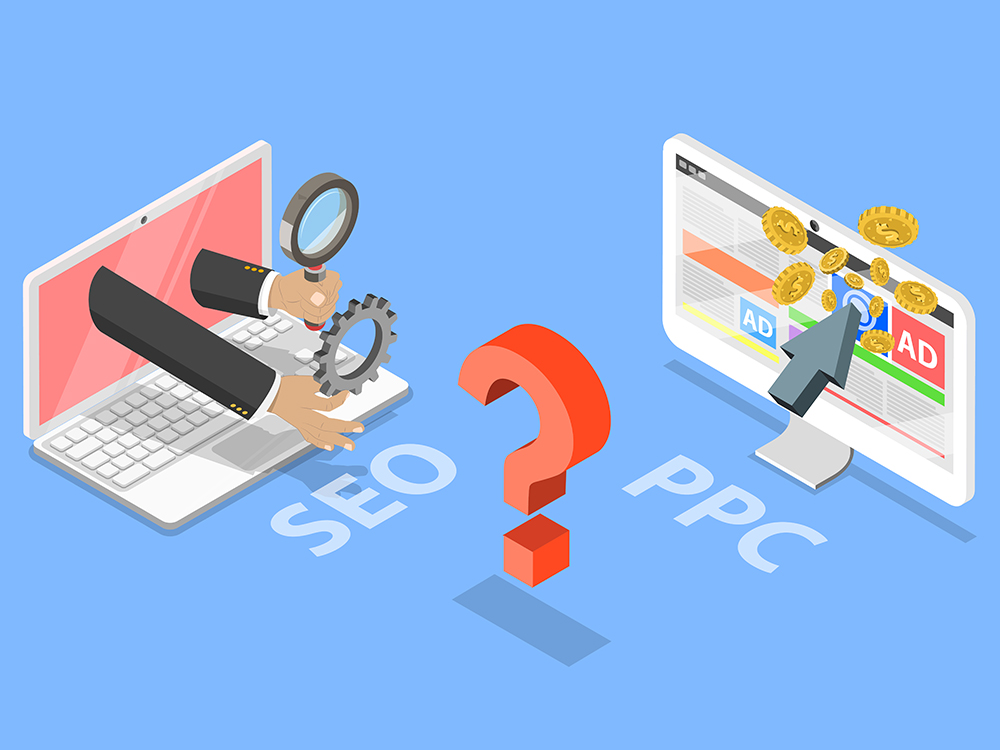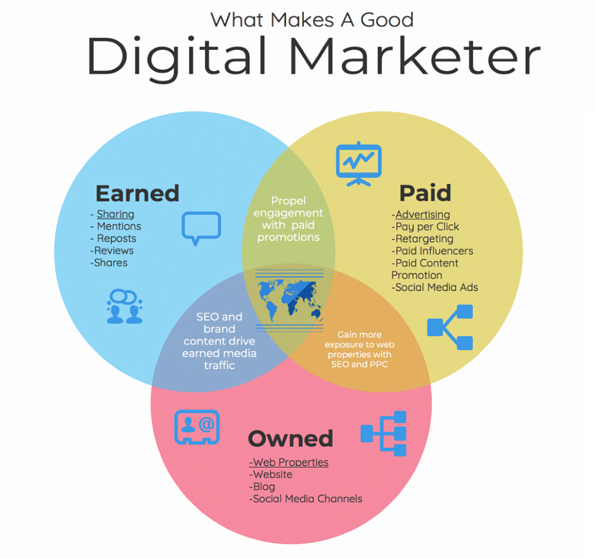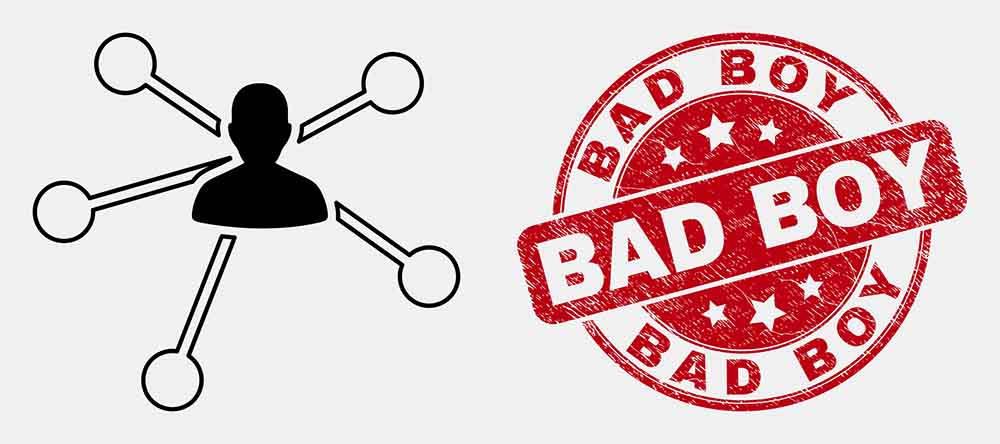
PPC and SEO, both effective stand-alone marketing entities, become much better when operating alongside. We’ve often heard, “Why should I bid on my marketed terms even Though I hold the top position in organic search? On top of it, whether you’re focused on only one tactic (e.g., PPC only or SEO only), you ‘re missing out on the importance that PPC and SEO will add together to your marketing plan. You’re missing out on the importance of PPC and SEO that incorporating it together would change the ways of your marketing strategy for the better.
Not only should these two enable you to navigate your brand tale, their teamwork often lays the groundwork for SERP to rule your business with powerful revenue-driving keywords!
Holistic Marketing

Several digital marketing tactics operate together to improve visibility, but PPC experts and SEO professionals working together are salt and pepper for digital marketing! They are meant to be operating alongside.
Increased visibility brings these two methods together in the digital trifecta. Although earned, owned, and paid media are all central to the digital approach, PPC and SEO cover all stages of the digital marketing trifecta.
- Paid media is the perfect way to market the brand and the advertising to your target audience.
- Good SEO and content campaigns are by far the most controllable aspects of any digital marketing strategy.
- Owned media is an augmentation of the brand, providing multiple possibilities for customers to connect with the brand, but needs upkeep.
- The use of channels together would generate earned media or “online word of mouth” and facilitate brand loyalty.

Share Keyword Data
Keywords are the fundamental variable for all sources and how a user integrates with a search engine. Sharing PPC and SEO keyword data helps obtain full coverage across the search demand curve.
A structured keyword campaign is a smart way to optimize the efficacy of each of these sources. For, e.g., strong long-tail keywords are difficult to find in PPC. However, they are ideal SEO possibilities because you can create content around certain terms without compromising the PPC budget or traffic. Non-branded head terms could be challenging to rank for a particular market, but they could be great contenders to incorporate to the PPC and ensure that you have coverage for certain terms. Offering a combined tactic throughout the entire search demand curve tends to help focus on high traffic and high converting terms from head to long-tail keywords.

Reasons for sharing keyword data:
- Keywords that are far too costly (— for example, non-brand terms) in the PPC domain may be the best SEO candidates.
- PPC and SEO strategies send you twice as much data to evaluate for prospects.
- Key operational organic keywords are strong testing candidates for PPC because they produce instant input on the efficacy of keywords (– for example, CVR, CTR, ROI).
- PPC advertisements are a good way to test organic keywords because of their reflectivity.
- Keywords with high conversion rates may be found throughout both marketing entities.
- The parameters of the site search could inform PPC keyword options.
Many entities aim to achieve PPC and SEO cohesiveness, but sharing keyword data remains the single most significant aspect of improving the efficiency and effectiveness of both these strategies. Normally there are two separate teams, and it’s crucial to maintain a standard pace for collaboration and integration.
Methods of integrating PPC and SEO keyword techniques:
- Use the data to help develop metrics and apprise other methods.
- Build a branded and non-branded keyword approach to help a cohesive marketing campaign.
- Monitor and evaluate seasonality.
- enhance coordination among both PPC and SEO resources:
- − Primary, secondary, tertiary terms
- − Market perspectives
- − content and Messaging on PPC landing pages and organic landing pages
- − SERP status
- Set shared targets through tactics ( CVR, CTR, and ROI targets).
Never Underestimate SEO

Although both SEO and PPC spaces are uncertain, SEO would be where brand owners would manage their stories. SEO is considered to be among the most compelling providers who have some of the most active traffic. $72.02 billion is the approximate sum for SEO resources paid by companies and organizations in the United States alone in 2018. The amount is projected to surge to $79.27 billion by the end of this year.
We get to see this every time– companies prefer to spend significantly on one platform or the other. They have bifurcated marketing teams and are attempting to understand the value of SEO structurally. Expenses on SEO would only continue to rise. Skilled digital marketers work to completely incorporate SEO into their marketing campaigns. In PPC, you have to keep track of what your competing companies and affiliated companies have been doing. When you start creating content, you own the brand story and manage how you optimize the content according to SEO best practices.
Tell an Interesting Story with the Data

The influence of data visualization is key to enabling stakeholder groups to comprehend the intended message you wish to express.
It’s better to start with a storyline in order to demonstrate the perspective within the organization. This would generate a sense of order and data, a clearer perspective, and make your work simpler.
Here are several strategies to use while you’re focused on reporting PPC and SEO metrics as well as many other multi-channel metrics:
- Offer full clarity – Explain your methods, list all of the sources, and inform people how you’ve collected information so that they can validate the results.
- Recognize your target audience – it will help form your updates and main viewpoints.
- demonstrate your style – keep it unique with quotations, metaphors, etc.
- Think about the data like a story — it requires a beginning, middle, and an ending.
- Use graphics – they ought to make some sense, and they ought to be easy to comprehend.
- make it simpler and easier to understand –Note that, less is more; you do not need the big, fancy words or difficult and complex graphics.
- Have a relevant and interpretable conclusion – a narrative or standpoint for the long term.
PRIORITIZE QUALITY SCORE
Quality Score is among the most significant metrics to monitor in PPC. The greater your Quality Score, the more Google considers the ad fulfills the specific needs of the customers.
If you are likely to obtain a good quality score, you would be able to reduce the CPCs and the cost per conversion. Quality Score is a Google rating of the significance of your landing page, ad copy, and keyword.
Following are the ways to incorporate the guiding principles of PPC and SEO to boost the quality score:
- Incorporate Negative Keywords – Continuously analyze, find, and remove unnecessary search terms that waste your budget.
- Execute Internal and External Keyword Gap Analysis – Variants and misspelled branded terms can be a cause of traffic leak.
- Conduct Keyword Analysis – Find new, highly applicable keywords that can be applied to the strategy, including long-tail prospects that are among the best converting keywords.
- Conduct Keyword Organization – Organise the keywords into tight, structured groups that can be more effectively linked to specific ad campaigns for both PPC and SEO.
- Refine Ad Text – Evaluate a PPC ad copy, which is more specific to the different ad groups. More efficient ads get higher CTRs, one of the best approaches to boost the quality score.
Providing a Cohesive Message
A cohesive message is a good way to bring together SEO and PPC to help propel the excellent outcomes for your brand. There are many ways to yield a cohesive message through both PPC and SEO. First, check the ad copy to make sure that the intended keyword is must be included in the text of the ad copy and even in the URL of your PPC ad. Bear in mind that new Google reforms would allow for a 90% rise in text space relative to existing extended text advertising, and there is much more scope for experimentation with various ad copy variants. Next, you will analyze landing pages and ensure they have strong relevance to targeted keywords and an ad copy and boost the quality score. Choose the same message in the Meta description in the PPC ad copy. You must mark up PPC landing pages with SEO on-page best practices –
- Page title
- Meta Description
- Alt tags
- Outbound links
- Internal linking
- URL structure
Providing a cohesive message is needed to create a strong digital presence because there is far so much pressure in today’s digital environment. A cohesive message also enhances the consumer’s journey and facilitates brand recognition. When you can create confidence in your brand, from both the point of view of the customer and the search engine, you will see better ROI in all marketing entities, not just PPC and SEO.
Monitor Affiliates
Affiliates play a significant role in sales, travel, hotels, and other sectors. Manually seeking to monitor their actions is incredibly time – consuming and counterproductive. Resourceful affiliates can feature in PPC ads and also in organic listings. Affiliates are programmed to get a click and drop a cookie. Affiliate ad hijacking, Direct linking, URL linking, and brand poaching are terms that you may hear in regard to affiliates who are attempting to poach your traffic.

Affiliates through redirect URLs can place ads and mask referrals. The affiliate hijacker not only earns an unmerited commission but also employs evasive tactics to escape detection. This situation is notably disruptive to the affiliate marketing program of a brand, as it is nearly difficult to identify without the assistance of a paid search monitoring tool.
The above tips were the compiled list of strategies for growth marketing integrating PPC and SEO. Such initiatives would certainly help to deliver the best and unparalleled success to the brand and to enable it to thrive.

